Archive for April, 2010
-
Joshua Tree National Park
Posted in North America | April 9, 2010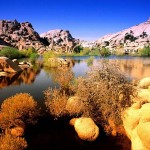 Joshua Tree National Park is located in the Southern Californian Desert (Riverside and san Bernardino Counties) in the United States. Previously a US National Movement, Joshua Tree National Park was declared a Biosphere Reserve in 1984 and a National Park in 1994. The park covers a total area of 7,89,745 acres and encompasses areas of Mojave and Colorado Deserts. The park gets its name from the distinctive Joshua Tree. The park is governed by the National Park Service. Geography: Features of the two desert areas are mainly determined by altitudinal factor. Colorado Desert, which encompasses the eastern part of the park has an altitude of below 910 metres. Little San Bernardino Mountains are located in the southwestern edge of the park. Mojave [...]
Joshua Tree National Park is located in the Southern Californian Desert (Riverside and san Bernardino Counties) in the United States. Previously a US National Movement, Joshua Tree National Park was declared a Biosphere Reserve in 1984 and a National Park in 1994. The park covers a total area of 7,89,745 acres and encompasses areas of Mojave and Colorado Deserts. The park gets its name from the distinctive Joshua Tree. The park is governed by the National Park Service. Geography: Features of the two desert areas are mainly determined by altitudinal factor. Colorado Desert, which encompasses the eastern part of the park has an altitude of below 910 metres. Little San Bernardino Mountains are located in the southwestern edge of the park. Mojave [...] -
Wonder of the Ivory-billed Woodpecker
Posted in Wildlife A-Z | April 9, 2010 The ivory-billed woodpecker was considered till recently to be an extinct species. However, its obscurity vanished when ornithologists have reported its sighting. The ivory-billed woodpecker is the third largest woodpecker species in the world. It was believed to be extinct some 50 years ago. However, in April 2005 a video featuring the birds surfaced from an Arkansas swamp forest. This video confirmed the existence of the bird. It captured the attention of the entire world. It was considered to be the equivalent of locating Elvis alive. Some researchers backed the evidence for the ivory-billed woodpecker while other insisted that the video recording shows a smaller woodpecker, which is common throughout North America. These woodpeckers make [...]
The ivory-billed woodpecker was considered till recently to be an extinct species. However, its obscurity vanished when ornithologists have reported its sighting. The ivory-billed woodpecker is the third largest woodpecker species in the world. It was believed to be extinct some 50 years ago. However, in April 2005 a video featuring the birds surfaced from an Arkansas swamp forest. This video confirmed the existence of the bird. It captured the attention of the entire world. It was considered to be the equivalent of locating Elvis alive. Some researchers backed the evidence for the ivory-billed woodpecker while other insisted that the video recording shows a smaller woodpecker, which is common throughout North America. These woodpeckers make [...] -
Splendor of the Great Egret
Posted in Wildlife A-Z | April 8, 2010 The great egret is a long-legged bird whose neck takes an ‘S-shape’. It is found throughout the Americas. Many diverse areas of the world are home to this species. It is regarded as the largest white egret that occurs within its range. The great blue heron is the only species larger than the great egret. Great egrets are found near salt water or fresh water. Their feeding areas include wetlands, streams, ponds, and tidal flats. They capture prey by walking silently or standing still for long periods of time. Any animal that comes within range of their long necks and razor-sharp bills is potential prey. The ultimate death blow is given with an immediate thrust of the sharp bill. The prey is then swallowed whole. Fish serves as the staple [...]
The great egret is a long-legged bird whose neck takes an ‘S-shape’. It is found throughout the Americas. Many diverse areas of the world are home to this species. It is regarded as the largest white egret that occurs within its range. The great blue heron is the only species larger than the great egret. Great egrets are found near salt water or fresh water. Their feeding areas include wetlands, streams, ponds, and tidal flats. They capture prey by walking silently or standing still for long periods of time. Any animal that comes within range of their long necks and razor-sharp bills is potential prey. The ultimate death blow is given with an immediate thrust of the sharp bill. The prey is then swallowed whole. Fish serves as the staple [...] -
Scorching Light of the Fireflies
Posted in Wildlife A-Z | April 8, 2010 The term firefly is common. Fireflies are also known as lightning bugs. However, not many know that these insects are beetles in reality. They are nocturnal insects belonging to the Lampyridae family. Fireflies have wings. This distinguishes them from other luminescent insects belonging to the same family, which are known as glowworms. There are nearly 2000 species of fireflies. They generally live in warm surroundings and temperate regions. They are clearly seen in summer evenings. They love moisture and thrive in the humid regions of Asia and America. Even in drier areas, they are present where there is ample of moisture. It is easy to understand how the fireflies got their name. However, not many know how these insects produce their characteristic [...]
The term firefly is common. Fireflies are also known as lightning bugs. However, not many know that these insects are beetles in reality. They are nocturnal insects belonging to the Lampyridae family. Fireflies have wings. This distinguishes them from other luminescent insects belonging to the same family, which are known as glowworms. There are nearly 2000 species of fireflies. They generally live in warm surroundings and temperate regions. They are clearly seen in summer evenings. They love moisture and thrive in the humid regions of Asia and America. Even in drier areas, they are present where there is ample of moisture. It is easy to understand how the fireflies got their name. However, not many know how these insects produce their characteristic [...] -
Potent Great White Sharks
Posted in Wildlife A-Z | April 7, 2010 In reality the great white shark is not as dangerous as in our imaginations. Recently, there has been a lot of research on these elusive predators. The great white shark is no longer viewed as a mean killing machine. Nearly one-third to one-half of the total shark attacks can be attributed to great whites. Most of these attacks are not fatal. Great white sharks are known to be naturally curious. They engage in what is known as ‘sample biting’ by releasing their victims. This cannot be very comforting news, but it does indicate that humans are not on the menu list of the great white shark. Great white sharks are the largest predatory fish on the planet. Their average length is 15 feet. There have been fish specimens exceeding 20 feet and [...]
In reality the great white shark is not as dangerous as in our imaginations. Recently, there has been a lot of research on these elusive predators. The great white shark is no longer viewed as a mean killing machine. Nearly one-third to one-half of the total shark attacks can be attributed to great whites. Most of these attacks are not fatal. Great white sharks are known to be naturally curious. They engage in what is known as ‘sample biting’ by releasing their victims. This cannot be very comforting news, but it does indicate that humans are not on the menu list of the great white shark. Great white sharks are the largest predatory fish on the planet. Their average length is 15 feet. There have been fish specimens exceeding 20 feet and [...] -
Mighty King Cobra
Posted in Wildlife A-Z | April 7, 2010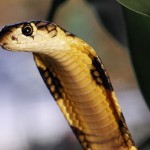 It can be a bit unnerving to know that the most venomous snake on the planet can stand erect and look at a full-grown adult straight in the eye. What are we talking about? Nothing but the legendary king cobra. A king cobra can touch 18 feet in length. This makes them the longest venomous snake in the world. When under threat, they raise nearly one-third of their bodies off the ground. This helps them move forward to attack. When they perceive danger, they develop their characteristic hoods and emit a spine-chilling hiss. This resembles the growl of a dog. The venom of the king cobra is not the most potent. However, the amount of neurotoxin that they generate in a single bite is sufficient to kill 20 people or a large elephant. Each bite can [...]
It can be a bit unnerving to know that the most venomous snake on the planet can stand erect and look at a full-grown adult straight in the eye. What are we talking about? Nothing but the legendary king cobra. A king cobra can touch 18 feet in length. This makes them the longest venomous snake in the world. When under threat, they raise nearly one-third of their bodies off the ground. This helps them move forward to attack. When they perceive danger, they develop their characteristic hoods and emit a spine-chilling hiss. This resembles the growl of a dog. The venom of the king cobra is not the most potent. However, the amount of neurotoxin that they generate in a single bite is sufficient to kill 20 people or a large elephant. Each bite can [...] -
Majestic Giraffe
Posted in Wildlife A-Z | April 6, 2010 Giraffe is the world’s tallest mammal. They owe this to their towering legs and long necks. The legs of the giraffe are taller than most humans, standing at 6 feet. These legs allow the giraffe to run up to 35 mph over short distances. Over longer distances, they cruise at 10 mph. These grandiose animals roam the open grasslands in groups of six to ten. Male bulls often engage in battle using their long necks and heads as battling gear. These skirmishes do not pose any dangers. They end with one animal walking away. Giraffes use their height to good benefits. They gorge on leaves and buds that lie high on the treetops. Few animals can reach these trees. The acacia plant is a particular favorite among the giraffe population. The tongue of the [...]
Giraffe is the world’s tallest mammal. They owe this to their towering legs and long necks. The legs of the giraffe are taller than most humans, standing at 6 feet. These legs allow the giraffe to run up to 35 mph over short distances. Over longer distances, they cruise at 10 mph. These grandiose animals roam the open grasslands in groups of six to ten. Male bulls often engage in battle using their long necks and heads as battling gear. These skirmishes do not pose any dangers. They end with one animal walking away. Giraffes use their height to good benefits. They gorge on leaves and buds that lie high on the treetops. Few animals can reach these trees. The acacia plant is a particular favorite among the giraffe population. The tongue of the [...] -
Magic of the Oyster
Posted in Wildlife A-Z | April 6, 2010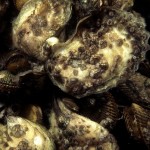 There are some food items in the world that question the validity of using these items as food. The oyster is one such food. The appearance of the oyster is generally unpalatable. Most individuals who gorge on oysters are undaunted by the rough and rocky surface of the oyster. The oyster shell, too, is nearly impossible to open. The body of the oyster is gray and slimy. Its plump body is phlegmatic in nature. The texture of the oyster is delicate and toothy. The flavor is rich with a hint of salt. They are also rich in calcium, iron, and protein. It has to be said that oysters are not for everyone. Adventure seekers the world over have experimented with oysters. They have been eaten raw as well as cooked for thousands of years. Food oysters [...]
There are some food items in the world that question the validity of using these items as food. The oyster is one such food. The appearance of the oyster is generally unpalatable. Most individuals who gorge on oysters are undaunted by the rough and rocky surface of the oyster. The oyster shell, too, is nearly impossible to open. The body of the oyster is gray and slimy. Its plump body is phlegmatic in nature. The texture of the oyster is delicate and toothy. The flavor is rich with a hint of salt. They are also rich in calcium, iron, and protein. It has to be said that oysters are not for everyone. Adventure seekers the world over have experimented with oysters. They have been eaten raw as well as cooked for thousands of years. Food oysters [...] -
Grand Teton National Park
Posted in North America | April 5, 2010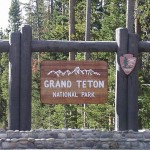 Grand Teton National Park is located in the Rocky Mountains in northwestern Wyoming in the USA. The park is noted for its mountain vistas, alpine lakes and wildlife. The park gets its name after Grand Teton, the tallest peak in the Teton Range at 4,197 metres. The name ‘Tetons’ was originally used to describe hills near the town of Arco in Idaho. Grand Teton National Park was established in February 1929. The park is spread over an area of 1,250 square kilometres. Geography The north-south-trending Teton Range, which is a part of the Rocky Mountains, rises from the floor of Jackson Hole (a graben with an average elevation of 2,100 metres) along a 64 km by 11-14 km wide active fault-block mountain. Jackson Lake is the largest lake here [...]
Grand Teton National Park is located in the Rocky Mountains in northwestern Wyoming in the USA. The park is noted for its mountain vistas, alpine lakes and wildlife. The park gets its name after Grand Teton, the tallest peak in the Teton Range at 4,197 metres. The name ‘Tetons’ was originally used to describe hills near the town of Arco in Idaho. Grand Teton National Park was established in February 1929. The park is spread over an area of 1,250 square kilometres. Geography The north-south-trending Teton Range, which is a part of the Rocky Mountains, rises from the floor of Jackson Hole (a graben with an average elevation of 2,100 metres) along a 64 km by 11-14 km wide active fault-block mountain. Jackson Lake is the largest lake here [...] -
Crater Lake National Park
Posted in North America | April 5, 2010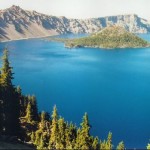 Crater Lake National Park is located in southern Oregon in the United States. John Hillman was the first white to have discovered the lake, way back in 1853. Set up in 1902 (thanks to the efforts of naturalist William Gladstone Steel), Crater National Park is the sixth oldest national park in the country. Medford is the nearest city to Crater Lake National Park. The park is spread over an area of 18,224 acres and is governed by National Park Service. The highest point in Crater Lake National Park is Mt. Scott at 2,722 metres. About Crater Lake: Crater Lake located at the centre of the national park is the deepest lake (594 metres at its deepest point) in the United States. The caldera is located in the remains of a destroyed volcano (Mount [...]
Crater Lake National Park is located in southern Oregon in the United States. John Hillman was the first white to have discovered the lake, way back in 1853. Set up in 1902 (thanks to the efforts of naturalist William Gladstone Steel), Crater National Park is the sixth oldest national park in the country. Medford is the nearest city to Crater Lake National Park. The park is spread over an area of 18,224 acres and is governed by National Park Service. The highest point in Crater Lake National Park is Mt. Scott at 2,722 metres. About Crater Lake: Crater Lake located at the centre of the national park is the deepest lake (594 metres at its deepest point) in the United States. The caldera is located in the remains of a destroyed volcano (Mount [...]


